From your 20s to your 70s: How to get fit at any age – and stay that way

Exercise is the closest thing we have to a magic bullet to counter the effects of ageing on the body. Consider this your ultimate guide to getting – and staying – fit as you move through the decades.
There are some things that change as you get older. The traits you desire in a partner, for example, and your idea of what constitutes a great Friday night. But the fundamentals of fitness stay the same no matter how many birthdays have passed.
"Fitness encompasses an array of different physiological phenomena," says sport and exercise medicine registrar and co-founder of Umi Health, Dr Amal Hassan. In textbook terms, there are five components of physical fitness:
Cardiovascular fitness refers to the efficiency with which your lungs and heart can take in and transport oxygen to the rest of your body
Muscular strength is the amount of force your muscles can exert
Muscular endurance is the time your muscles can work for without tiring
Flexibility and mobility are related to the freedom of movement in your muscles and joints
Body composition, which is to do with the percentage of fat, muscle and bone in the body.
“Getting fit happens when you progressively stress these systems at a cellular level so that you adapt, and this manifests in improved performance," Dr Hassan adds.
When you’re young, you tend to focus on one or two of these pillars – which you’re able to get away with.
"But as you age, the full spectrum of fitness becomes increasingly important," says Dr Nicky Keay, a sports and dance endocrinologist. Cardiovascular fitness can help protect you from heart disease, and muscular strength and endurance can keep your bones strong, while both help maintain lean muscle mass, which in turn reduces your risk of other chronic diseases. Meanwhile, good mobility, well, keeps you mobile. In short: all play a role in keeping you well.

Here’s the rub: ticking all those boxes comes with its own challenges as your body – and lifestyle – continue to change. So, we’ve recruited the help of experts in fitness, hormones and exercise physiology to bring you the ultimate guide to getting fit at every age.

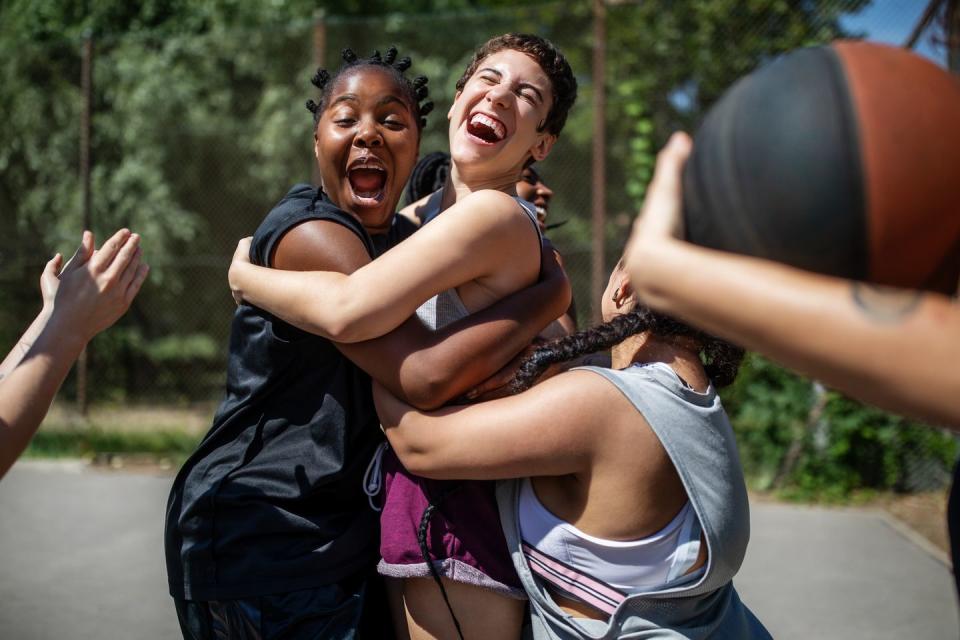
What's going on in your body?
This is the decade in which you’re most likely to be in your peak physical condition; your reaction times are at their fastest, you can build muscle quicker, and recover from tough sessions faster. You’re also developing your musculoskeletal strength.
"Because bone density peaks in your twenties to early thirties, undertaking weight-bearing activity [where your bones are supporting your weight] like running, football or netball, in combination with a strength programme, can maximise your bone health for life," says Dr Rebecca Robinson, consultant physician in sport and exercise medicine.
While any weight-bearing aerobic exercise is good for your bones, joining a team can help you in ways that extend beyond the physiological benefits of running and jumping. That feeling of belonging has been shown to reduce your risk of developing chronic conditions like heart disease and type 2 diabetes, as well as improving your body image – something women in their twenties are more likely to be struggling with than older women, according to WH’s Project Body Love research.
But while this is a great time to fall in love with exercise, over-exercising is common among women of this age group. For many of the 20-something patients Dr Keay sees for amenorrhoea (loss of periods), it can be directly attributed to relative energy deficiency in sport (RED-S, pronounced ‘reds’).
"It’s a disparity between food intake (the energy and micronutrients you’re consuming) and the nutrition required to cover the energy demands of exercise and the basic “housekeeping” tasks in the body," she explains.
If you’re concerned that your workouts are taking their toll, Dr Keay suggests ditching high-intensity exercise and building in some strength and conditioning sessions, too.
Your new fitness go-to
Join the club: Not a fan of team sports? Try rock climbing, boxing or ballet – and keep trying until you find something you love, says Kate Rowe-Ham, personal trainer and founder of the Fit Hut in Sussex.
"The goal is to build a relationship with exercise that becomes like brushing your teeth – something you incorporate into your days without even thinking about it." Download the ClassPass app for pick-and-mix access to all of the above and more. Membership starts at £35 per month.

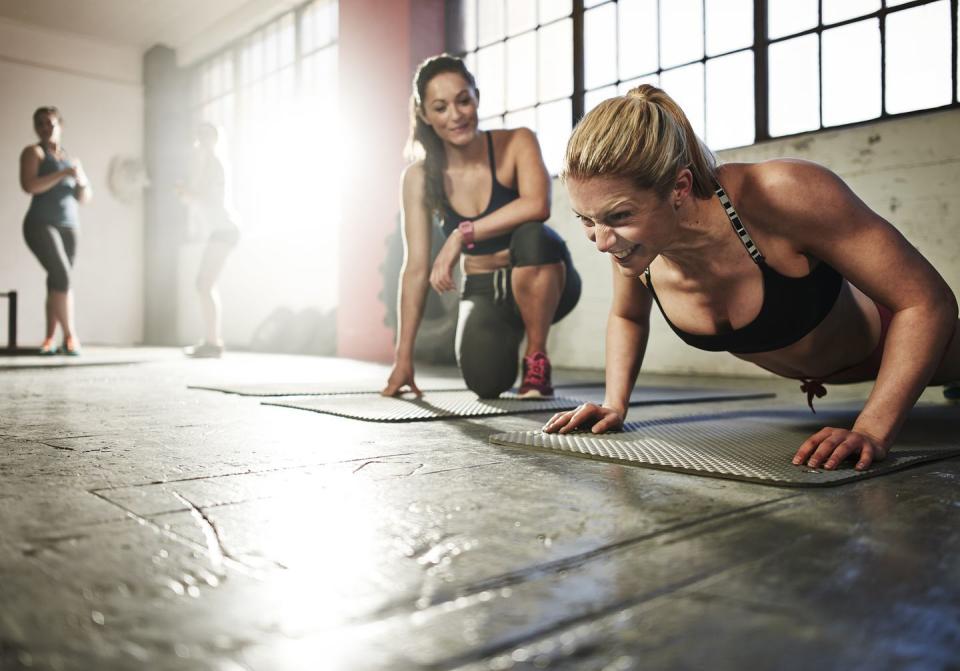
What's going on in your body?
What do workouts and nights out in your thirties have in common? You’ll probably notice your body takes longer to recover from them than it used to.
Rest days and active recovery [think: a 20 to 30-minute walk or even a yoga session] can help counter this by promoting blood flow and, with it, the flow of nutrients necessary for cellular repair, like oxygen, amino acids from protein, and glucose from carbohydrates.
This is also the decade during which muscle strength and bone density begin to decline. Rowe-Ham prescribes strength training for both; any weight-bearing aerobic exercise will work, but strength training has an edge, since lifting weights gets the hips, spine and wrists involved, strengthening bones in those areas, which are the sites most likely to fracture.

Since the average age of first-time motherhood in the UK is 30.6, this may also be the decade when you’ll need to adapt your workouts around prenatal and postnatal training. "The most delicate stage of a pregnancy is the early weeks, so if you’re trying to conceive, I wouldn’t recommend drastically increasing your training intensity," Dr Keay cautions.
Recently given birth? Here's your post-pregnancy workout plan. Make sure there are no issues with recovery at your six-to-eight-week check-up, ease back in gently and don’t skimp on pelvic floor exercises (you may know them as Kegels). "Build your strength and fitness back up slowly," Dr Hassan says. "Start with walking, then move on to simple body-weight strength work before adding weights or impact."
And since research suggests that pregnant women and new mums are feeling higher levels of anxiety and loneliness during the pandemic, choosing classes that include a social element could help. Many gyms and leisure centres offer post-partum workout classes, and services like Carifit offer specialist classes for new mums, with great online communities, too.
Your new fitness go-to
Get appy: Strength training is the most effective way to strengthen bones and muscles. Even if you’re a beginner, apps like Sweat (£14.99 per month) – we recommend the PWR plan – or Tone & Sculpt (£13.99 per month) can help you learn the basics, with a progressive programme that will keep challenging your body.

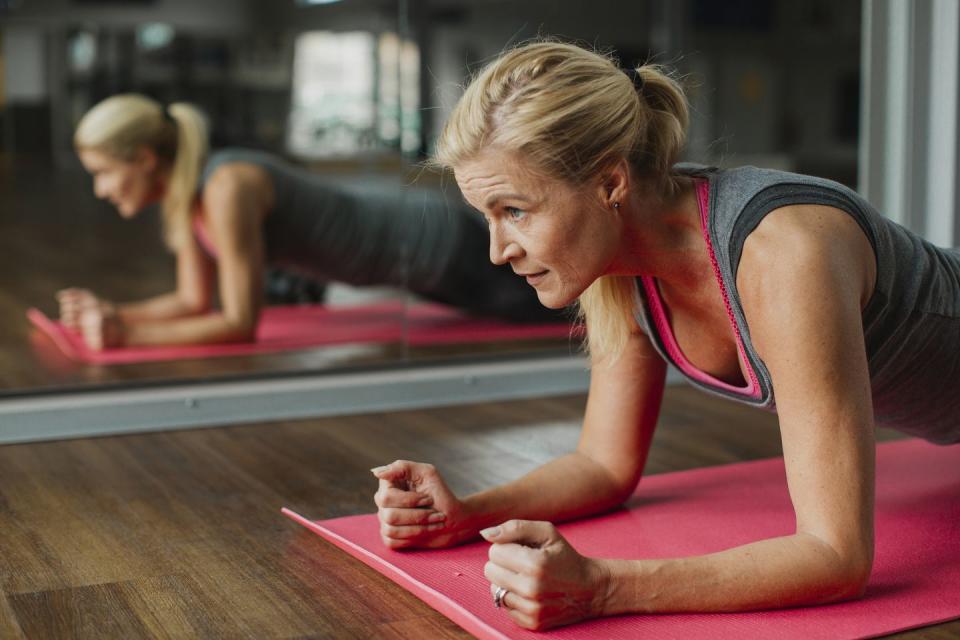
What's going on in your body?
You’ve heard of the menopause (more on that in a minute) but what of somatopause? This refers to the gradual decline of somatotropin, or growth hormone (GH), which usually begins during this decade.
GH stimulates (you guessed it) growth, cell reproduction and regeneration, and fat metabolism (the breakdown and storage of fat), among other things. "Decreased muscle mass, increased fat, and reduced libido and energy might be experienced during this decade," says Dr Robinson.
Falling levels of oestrogen and progesterone – changes consistent with perimenopause – also contribute to changes in your body composition; when oestrogen drops, fat storage tends to switch from hips and thighs to the abdomen.
While you may not love the extra inches, it’s the visceral fat – the fat stored in your abdominal cavity near your organs – that increases your risk of heart attacks and heart disease, type 2 diabetes, stroke, breast cancer, colorectal cancer and Alzheimer’s disease.
The decrease in muscle mass and decline in activity that often accompany this age range may also slow your metabolism – the chemical processes that help convert food into energy.
Looking to burn fat around your middle? "You can’t spot-reduce fat," says Rowe-Ham, referring to the old myth that you can target fat in a certain area of the body through exercising specific muscles. "Increasing lean body mass by building muscle is the most sustainable way forward if weight loss is the goal."
She recommends functional strength training for her clients in this age bracket, which focuses on large body movements that mimic activities in your daily life, like walking, bending, pushing and pulling, as building muscle anywhere on your body can help increase the number of calories you burn at rest.
You can add weights to the movements, or rely on your own body weight to provide the resistance. Free time a luxury you no longer have? HIIT (high-intensity interval training) is your friend. A well-programmed HIIT workout will intersperse compound moves that work multiple muscle groups with heart-pumping cardio segments to burn more calories and build strength (and be over before anyone notices you’ve actually taken some time for yourself).
But given that your body requires more time to recover, Rowe-Ham advises doing a maximum of three high-intensity sessions per week, alongside active recovery and strength training.
Your new fitness go-to
Go virtual: Make the most of your workout time by getting your fix online, at home. Studios like 1Rebel (£15.99 monthly) and Digme (£9.99 monthly) offer virtual versions of their famous workouts for you to stream at home, many of them kit-free.

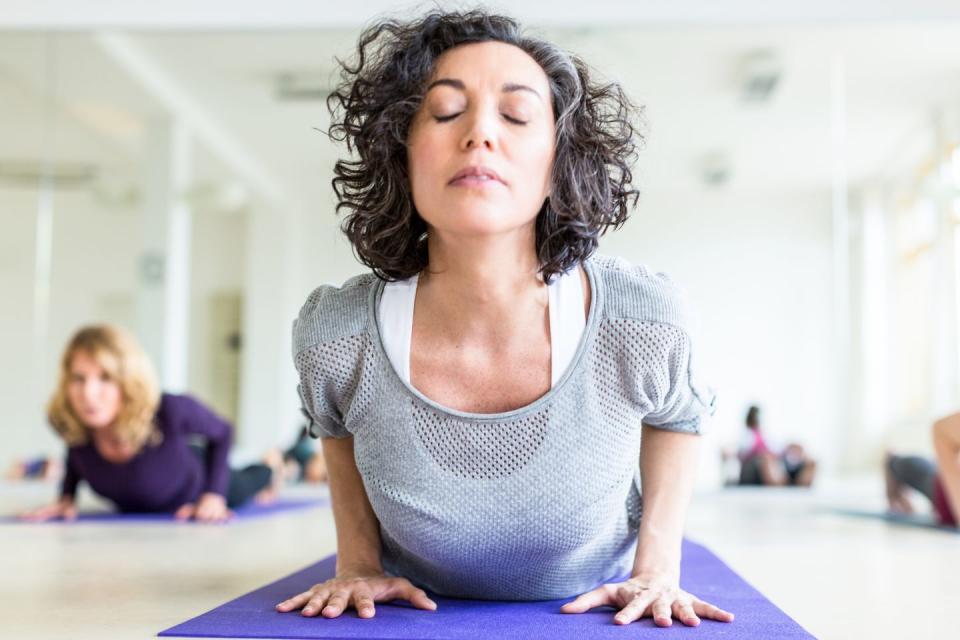
What's going on in your body
Not since puberty or pregnancy has your body undergone such a massive hormonal upheaval. In the UK, the average age at which you’ll hit the menopause is 51; in a nutshell, your ovaries stop producing oestrogen and progesterone, which means ovulation and menstruation will be erratic until they stop completely.
As well as being crucial for bone health, oestrogen plays a key role in protecting your heart, Dr Keay explains. "Men are at a higher risk of getting cardiovascular disease, but after women go through menopause, their risk becomes equal because they no longer have the protective effects of oestrogen," she explains. So when it declines, maintaining a healthy weight and doing regular cardiovascular exercise – anything that gets your blood pumping – become vital.

It’s also worth noting that your pelvic floor muscles are not immune from the loss of muscle mass that comes with age. This means that pelvic floor disorders (PFDs) are more common among 50-something women. A 2017 study found that 32 per cent of women in their fifties suffered from PFD, which could mean urinary incontinence, painful sex and chronic pelvic pain, among other things.
Dr Keay recommends strength and conditioning exercises that target all-round performance. This could mean adding 10 to 15 minutes of brisk walking, running or rowing to a strength session that features moves like weighted step-ups.
As for strengthening your pelvic floor? "Core moves, like deadbugs [lying on your back with legs in tabletop position and lowering your leg and opposite arm to hover just off the floor] and bird dogs [kneeling on all fours and raising your leg and opposite arm] and bridges [lying on your back with knees bent and feet on the floor, squeezing your bum to lift your hips], should be mainstays in your exercise programme," she adds.
Your new fitness go-to
Meet resistance: Strength training doesn’t have to mean heavy lifting. Resistance bands are a great option for a do-anywhere workout.
"I also recommend Pilates to women in their fifties," Rowe-Ham says. "This kind of lower-impact workout is still resistance training, meaning you’ll still benefit from increased muscular strength and improved bone health."


What's going on in your body
Suddenly aware of your joints? Here’s why: as you age, the thick, lubricating synovial fluid inside your joints decreases and the cartilage becomes thinner. Meanwhile, ligaments tend to lose moisture and elasticity, meaning you lose some flexibility, which can contribute to joint stiffness.
This gradual process begins decades before you feel it, says Dr Robinson. "If you were to scan everyone’s joints, many people would have what doctors call “degenerative changes” that are actually normal ageing from their thirties onwards."
But there’s something you can do to counter that degeneration; in fact, it may prevent you from ever reaching the point of suffering pain and immobility. Exercise stimulates circulation of that synovial fluid – think of it as adding oil to the engine – and transports vital blood, oxygen and nutrients to those joints.
Strong, supportive muscles will also ease the pressure placed on joints, which often come under strain with the natural loss of muscle mass that comes with age. "In combination with maintaining a healthy weight, optimising muscle strength is the best strategy for protecting your joints," adds Dr Robinson.
Her advice? "Start gradually, and include activities that load the joints evenly and gently, like body-weight gym exercises [moves that require you to use your own weight as resistance] and work on your balance, which declines with age."
To build strength and improve balance simultaneously, Rowe-Ham suggests supported squats (squat with a chair behind you to lower yourself on to), calf raises (with fingertips against a wall for support, lift your heels to come up on to your toes, then lower back down) and supported leg curls (using a chair for support, bend one knee to bring your heel as close to your bum as you can). If you do feel joint pain, forgo high-impact activity in favour of something less jarring.
Your new fitness go-to
Hit the mat: Tai chi, yoga and Pilates can all help you build strength while working on your balance, mobility and flexibility. If there are no classes like this in your area, YouTube can be a useful resource (we recommend Yoga With Adriene and Lottie Murphy’s channels).

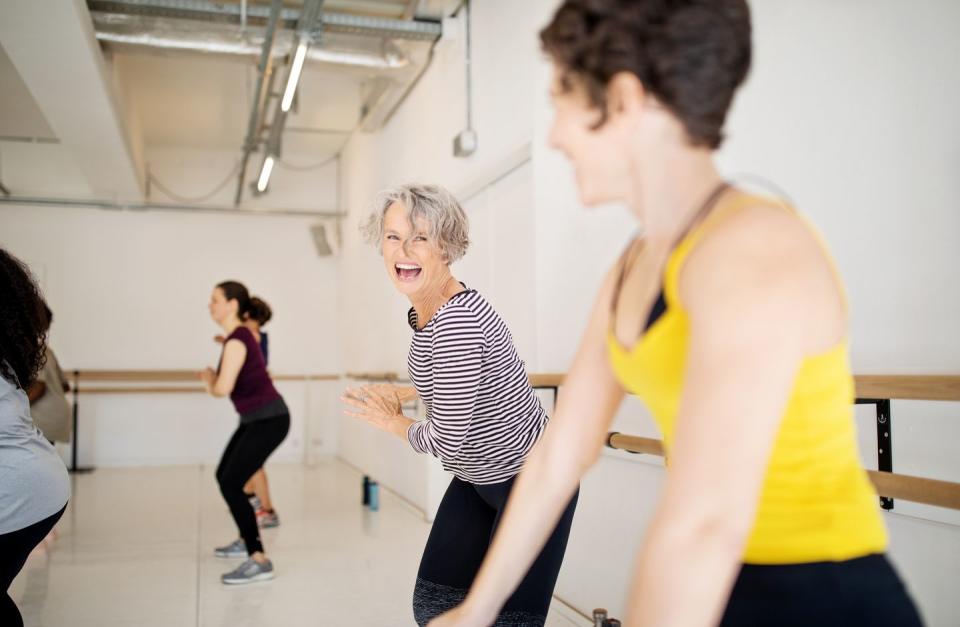
What's going on in your body
The degenerative effect age can have on the brain can also have an impact on your body via the slowing of the mind-to-muscle connection.
"The nervous system [a network of nerves and cells that carry messages between the brain and various other parts of the body] relies on feedback mechanisms between the brain and the body," Dr Robinson explains.
"As you age, some of these routes will slow down, but challenging the body with different activities can keep these neural pathways firing." In other words, regular use of these lines of communication will help keep them open and functional.
Dr Keay recommends engaging your brain-body connection via a low-impact cardio workout, like dance. "It’s a weight-bearing cardiovascular activity that builds neuromuscular and memory skills," she explains.
A 2018 study measuring the neurological impact of a six-month dance programme on men and women aged between 63 and 80 found that it increased volume in regions of the brain associated with higher cognitive process, like working memory and attention, which are vulnerable to age-related decline.
Researchers suspect it’s thanks to the large numbers of processes involved in dancing; spatial awareness, balance and co-ordination, to name a few. "It can help build social connections, too – which may be just as, if not more, important for health and longevity," says Dr Keay.
Your new fitness go-to
Learn a new skill: "Zumba, line, ballroom – there are many options when it comes to learning dance," says Dr Keay. Be on the lookout for classes like these at your local leisure centre.
In need of some at-home inspiration? Sign up to our free weekly newsletter for skincare and self-care, the latest cultural hits to read and download, and the little luxuries that make staying in so much more satisfying.
Plus, sign up here to get Harper’s Bazaar magazine delivered straight to your door.
You Might Also Like


